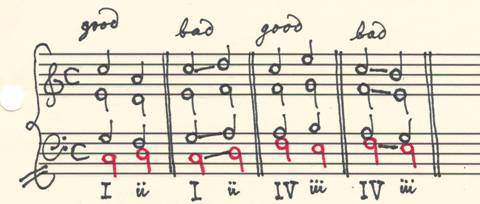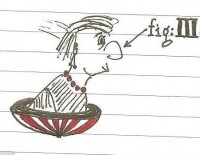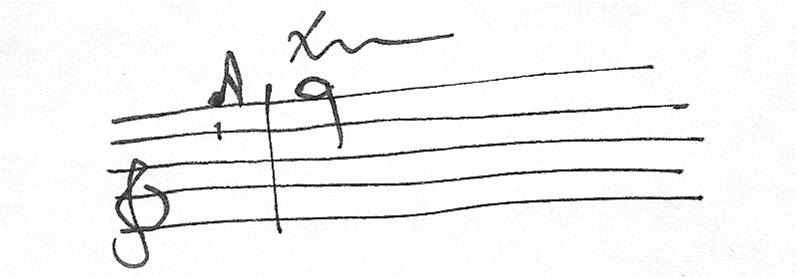Haydn’s Creation
Earlier this month I attended a performance of Franz Joseph Haydn's magnificent oratorio, THE CREATION, at Woolsey Hall in New Haven. This immortal masterpiece is one of the pinnacles of artistic achievement; I refuse to miss any local presentation of it! This time I...
Composing a Requiem
I am composing a Requiem for my brother, James, who passed away in the Spring of 2011. I can only work on it a little at a time, since I find this project quite daunting, as well as emotionally exhausting. At the current rate of progress, I expect it will take me...
My Pedagogical Pedigree

Voice Leading Made Easy
When learning to write music in four-part harmony in root-position, it can seem quite daunting for the novice. There are so many things to avoid: parallel unisons, fifths and octaves; melodic movement by an augmented second or a tritone; awkward leaps, et cetera....

The Dynamics of Dissonance
I would like to remind you blogees of an all-too- often-forgotten (or altogether-ignored!) concept of elegant musical performance: namely that, in general, DISSONANCES SHOULD BE PLAYED OR SUNG MORE LOUDLY THAN CONSONANCES. This rule applies to MELODIC dissonances on...
The Truth About Tempo
Most people, including many musicians, believe (or assume) that the surest way to ruin a piece of music is to perform it too SLOWLY, letting it “drag”. In reality, RUSHING through it is usually a far worse crime; an excessively quick tempo tends to rob the music of...
Enlightenment About the Proper Uses of Second Inversion Triads
I want to enlighten you about the proper use of second inversion triads. That’s right, folks: the much-talked-about six-four chord! Let’s get one thing straight right off the bat: it’s DISSONANT, and must be treated as such. Once you get that simple fact through your...

Don’t Tell Me to “Shut Up”!
Today, one of my piano students (a nine year old girl) “accidentally” told me to “Shut up!” when we were joking around at her lesson. When she realized what she had said, and to whom she had said it, she instantly gasped and put her hands over her mouth, HORRIFIED! I...

How to Play Trills on the Piano
Most musicians, even many professionals, don't seem to know how to properly execute the trill. In music composed before circa 1820, almost all trills are supposed to begin on the upper auxiliary note, NOT the main (written) note. It was Mozart's pupil, Hummel, who...
David Enters the 21st Century
Okay, nobody faint! David Gleba is entering the 21st century this summer by not only getting his own email account but by also securing his own website. I, Sandy Connolly, the webmistress of this site, will be keeping you up-to-date on the process. My favorite quote...
